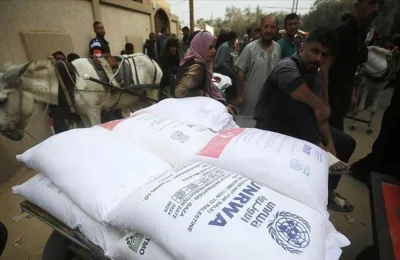When Kenya took its anti-terror war to the doorsteps of the al-Qaeda-linked al-Shabab in Somalia in…

When Kenya took its anti-terror war to the doorsteps of the al-Qaeda-linked al-Shabab in Somalia in 2011, its mission was to cripple and wipe out the militants.
The military incursion was launched after the Muslim extremists kidnapped several tourists and virtually brought tourism in Kenya, one of the country’s top foreign exchange earners, to its knees.
Initially, the war paid handsome dividends, with al-Shabab being pushed away from the Kenyan border and eventually being routed out of Kismayo — a Somali city, whose port the group exploited to finance its terrorist network in East Africa. For months, Kenyan defense forces and the African Union Mission in Somalia (Amisom) thought they had dealt a serious blow to their enemy.
But the celebration was short-lived. In early 2012, al-Shabab started turning the tables on Kenya by attacking areas inside the East African economic powerhouse. The group also abandoned conventional warfare and adopted an asymmetric, hit-and-run approach using its cells in Kenya.
The spate of attacks, aimed at forcing Nairobi to withdraw its troops from Somalia, have continued to date, with the worst being the slaying of 67 people in a four-day siege of Nairobi’s Westgate Mall in September.
In the latest attack, on June 15, at least 48 people were killed when more than 50 militants attacked Mpeketoni township in Lamu, 80 miles from the Kenya-Somalia border, with explosives and guns.
But if Kenya could pursue the terrorists in Somalia, why has it failed to stop them from slaughtering people within its borders? Al-Shabab is having a field day in Kenya because of serious failures in the country’s security apparatus and governance. The weaknesses can be summarized as follows:
•Weak security intelligence: Most attacks, including the latest in Mpeketoni, caught Kenya’s National Intelligence Service (NIS) on the back foot. The performance of the intelligence agency has come into question in recent months, and some Kenyan politicians have called for the firing of its head, Michael Gichangi, who is accused of failing to help security agencies stop terrorists in their tracks. The agency has failed to rise to the occasion even when foreign intelligence agencies warn of imminent attacks. Last month, for instance, the United States and Britain advised their citizens to leave Kenya in anticipation of terror attacks. A day before the Mpeketoni bloodbath, the Standard newspaper reports, Britain closed its consulate in Mombasa for fear of attacks. Despite these red flags, NIS seems not to have been bothered after President Uhuru Kenyatta slammed the West over the travel advisories.
•Rank corruption: For the past three years, Transparency International has ranked police and the immigration department among the most corrupt institutions in Kenya. Terror masterminds have capitalized on endemic graft to advance their agenda. Terror suspects have, for instance, walked to freedom after bribing police officers. On the other hand, some officers working for the immigration and registration of persons department have been prosecuted for issuing Kenyan identification documents to illegal foreigners from Somalia — some of whom turn out to be al-Shabab terrorists.
•Poor anti-terror strategy: Kenya’s anti-terror plan has all the hallmarks of firefighting. Security agencies have been swinging into action, and at times violating human rights, after terrorists hit their targets. In the aftermath of an April grenade attack in downtown Nairobi, for example, Kenyan security agencies roughed up and detained more than 600 people for allegedly lacking proper documents.
The majority of those seized in the operation, code-named “Usalama Watch,” were from the ethnic Somali community, and Somali leaders accused the government of ethic profiling. This has given rise to bad blood between police and members of the community. Al-Shabab has called for an end to this harassment in its list of demands to Kenya if Nairobi wants the group to halt its murderous mission in Kenya, as Daily Nation reports.
•Poor and inadequate equipment: Kenya’s police, charged with maintaining homeland security, lacks modern machinery to deal with new security threats such as terrorism. Budget constraints and rank corruption have conspired to deny the officers sophisticated weapons to match the firepower of terrorists. Many police stations across the country lack basic equipment. In March, the Associated Press revealed that the anti-terror police unit in Nairobi was operating on a budget of $735 per month. In comparison, parliamentary salaries and allowances total about $15,000 per month, per representative. Poor pay and lack of basic amenities have demoralized the officers, and some are thought to be rocking the anti-terror boat from within.
•Messy investigations: Like a ritual, the Kenyan government has been promising to “leave no stone unturned” and ensure “terrorists are brought to book” whenever an attack occurs. In many cases, this has turned out to be hot air because investigations end up hitting dead ends because of poor handling. In some scenarios, indiscriminate arrests leave police with the wrong suspects, and many cases in court flop because of lack of evidence.
•Poor local and regional cooperation: In the aftermath of the Westgate Mall attack, it emerged that the National Intelligence Service had warned security agencies of a possible attack. This warning was ignored because of poor coordination between NIS and police.
Regionally, Horn of Africa states have not been sharing intelligence on terrorism as much as they should. Kenya, Ethiopia, Uganda, Tanzania, Rwanda and Burundi are fighting a common enemy, but there has been little cooperation.
There is some hope though. Kenya and East African states seem to have learned their lessons the hard way and are working to right their mistakes. Kenya, for instance, has launched an ambitious plan to install CCTV cameras in all major towns. Kenyatta is also planning to shake up the security system amid the ongoing police reforms.
Regionally, East African Community states have agreed to implement a common anti-terrorism strategy to combat terror and other transnational crimes.
This article first appeared on Washington Post Blogs







